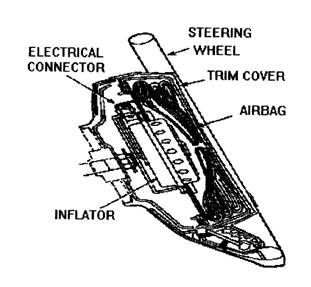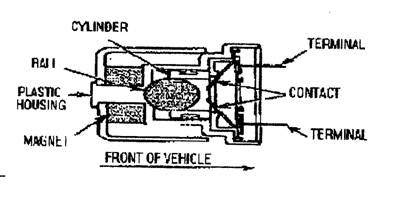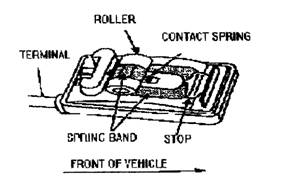





Published on Feb 14, 2025
For years, the trusty seat belt provided the sole form of passive restraint in our cars. There were debated about their safety, especially relating to children. But over time, mush of the country adopted mandatory seat-belt laws. Statistics have shown that the use of seat belts has saved thousands of lives that might have been lost in collisions. Air Bags have been under development for many years.
The attraction of a soft pillow to land against in a crash must be very strong – the first patent on an inflatable crash-landing device for airplanes was filed during World War II. In the 1980’s the first commercial air bags appeared in automobiles.
Since 1988, all new cars have been required to have air bags on both driver and passenger sides (Light Trucks came under the rule in 1999). To date, Statistics show that air bags reduce the risk of dying in a direct frontal crash by 30 percent. Newer than steering Wheel mounted or Dashboard-mounted bags, but not so widely used, are seat-mounted and door mounted side air-bags. Some experts say that within the nest few years, our cars will go from having dual air bags top having six or even eight air bags. Having evoked some of the controversy that surrounded seat-belt use in its early years, air bags are the subject of serious government and industry research and tests.
Stopping an object’s momentum requires force acting over a period of time. When a car crashes, the force required to stop an object is very great because the car’s momentum has changed instantly while the passengers’ has not much time to work with. The goal of any supplemental restraint system is to help stop the passenger while doing as little damage to him or her as possible.
What an air bag wants to do is to slow the passengers’ speed to zero with little or no damage. The constraints that it has to work within are huge. The air bag has the space between the passenger and the steering wheel or dashboard and a fraction of a second to work with. Even that tiny amount of space and time is valuable, however, if the system can slow the passenger evenly rather than forcing an abrupt halt to his or her motion.
The idea of using a rapidly inflating cushion to prevent crash injuries has a long history. The first patent on an inflatable crash-landing device for airplanes was filed during World War II.
Early efforts to adapt the air bag for use in cars bumped up against prohibitive prices and technical hurdles involving the storage and release of compressed gas.
• If there was enough room in a car for a gas canister.
• Whether the gas would remain contained at high pressure for the life of the car.
• How the bag could be made to expand quickly and reliably at a variety of operating temperatures and without emitting an ear-splitting bang.
They needed a way to set off a chemical reaction that would produce the nitrogen that would inflate the bag. Small solid-propellant inflators came to rescue in the 1970’s.
In the early days of auto air bags, experts cautioned that the new device was to be used in tandem with the seat belt. Seat belts were still completely necessary because airbags worked only in front-end collisions occurring at more than 6 Kmph. Only Seat belts could help in side swipes and crashes (Although side-mounted air bags are becoming more common now), rear end collisions and secondary impacts. Even as the technology advances, air bags still are only effective when used with a lap/Shoulder seat belt.
Airbag are assemblies consisting of the airbag (made of Nylon), inflator modules and sensor housing, electrical connectors (Clock spring), airbag retainer and the cover. The driver's side bag is mounted in the center of the steering wheel as shown in fig. 1.

Fig. 1 Driver's side bag
Ball and Magnet Type Sensor

Fig. 2 Ball and Magnet Type Sensor

Fig. 3 Spring and Roller type
By function, there are 2 types- Impact sensors and safing sensors. The Forward sensors are located in various locations forward of the passenger compartment. Some are located inside the fenders, some are on the cowl, and some are attached to the core support in front of the radiator.
Rear Sensors are also known as safing sensors as their functions is to determine that a crash has occurred. Rear safing sensors are located in various locations in the passenger compartment depending on the manufacturer. Some are integrated with the control/Diagnostic Module.
The Rear safing sensor must close before the forward sensors to avoid airbag deployment in cases where the impact is not severe enough to cause deployment. When the vehicle is parked with ignition off deployment is very unlikely because there is no power to the circuits for deployment this means that someone can hit your car and sound the alarm but not deploy the airbags.
| Are you interested in this topic.Then mail to us immediately to get the full report.
email :- contactv2@gmail.com |